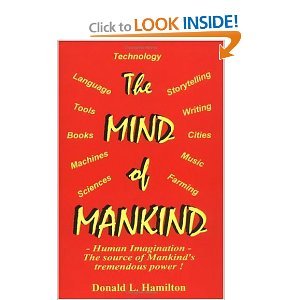
Donald Hamilton
Suna Press, 1996, 210 page
In the author's own words online:
Human Imagination
An eagle may have much keener eyes then ours but it cannot “see” the things that we can.
EVOLUTION BY DESIGN “Predetermined Randomness”
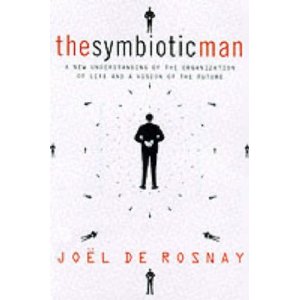
The Symbiotic Man: A New Understanding of the Organization of Life and a Vision of the Future
Joel De Rosnay (Author)
In this Future Shock for the new millennium, de Rosnay, director for strategy for the Science and Industry Complex in Paris, predicts the coming of what he calls the “Cybiont”: a global “macroorganism” that encompasses humanity, the environment and technology. The culmination of de Rosnay's earlier work (The Macroscope; The Paths of Life; The Planetary Brain), this book became a bestseller upon its initial publication in France in 1995. The author regards the computer as a “macroscope,” an instrument that lets humans view larger trends and that will eventually take on a life of its own; he quotes Stephen Hawking's view that computer viruses and other electronic “intelligence” may actually be developing into forms of life. For mankind to survive, we must establish close symbiotic relationships with our technology and its emerging self-generated intelligence and with nature, he says. Unfortunately, de Rosnay fails to consider very deeply what constitutes consciousness, a subject many other scientists have investigated, or artificial intelligence. He also seems to overestimate humans' willingness to sacrifice their private interests to achieve long-term, communal goals. De Rosnay does, however, present many provocative ideas like “fractal time” and “time bubbles,” and he discusses interesting and thus far fairly esoteric advances in technological sensory perception and even brain-computer connections. This book doesn't come together as a convincing vision of the future, but it certainly provides readers with many challenging ideas to mull over, and it may encourage them to consider their individual roles in the greater scheme of things.
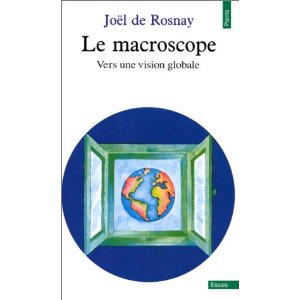
The Macroscope; The Paths of Life; The Planetary Brain
in US: The macroscope: A new world scientific system
See Also:
Worth a Look: Book Reviews on Bio-Economics
Worth a Look: Book Reviews on Civilization-Building
Worth a Look: Book Reviews on Collective Intelligence
Worth a Look: Book Reviews on Common Wealth
Worth a Look: Book Reviews on Conscious, Evolutionary, Integral Activism & Goodness
Worth a Look: Book Reviews on Dialog for Truth & Reconciliation
Worth a Look: Book Reviews on Diversity of Voices & Values (Other than USA)
Worth a Look: Book Reviews on Diversity of Voices & Values (USA)
Worth a Look: Books Reviews on Education for Freedom & Innovation
Worth a Look: Book Reviews on Evolutionary Dynamics
Worth a Look: Book Reviews on Innovation
Worth a Look: Book Reviews on Leadership for Epoch B
Worth a Look: Book Reviews on Self-Determination & Secession
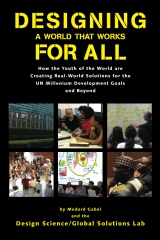
Medard Gabel (Author), Design Science/Global Solutions Lab (Contributor)
![]() Revolutionary–a Milestone in Human Applied Thought
Revolutionary–a Milestone in Human Applied Thought
November 30, 2010
I have looked over the galley that is free online (as are all my books) and consider this to be a milestone in human applied thought. I have bought it here at Amazon, confident this is going to be one of the few books that I do not donate to George Mason University, which took over my entire library when I joined the United Nations in March 2010.
Medard Gabel is modest–the blurbs do not do justice to him or his work or the incredibly talented and imaginative individuals (not just youth, but mid-career professionals) that he attracts to this calling.
I have participated in two of his design labs and recommend them to one an all. Everyone enters with their own issue area (urban planning, energy, whatever) and halfway through they experience the “aha” moment (epiphany for Republicans)–everything is connected and NOTHING can be planned, programmed, budgeted, or executed without integrating everything.
As Russell Ackoff likes to say, what is good for one part of the system might be very bad for all the other parts. Comprehensive architecture and prime design–all threats, all policies, all demographics–are the future.
See Also:
Ideas and Integrities: A Spontaneous Autobiographical Disclosure
Redesigning Society (Stanford Business Books)
Collective Intelligence: Creating a Prosperous World at Peace
INTELLIGENCE for EARTH: Clarity, Diversity, Integrity, & Sustainaabilty

See Also:
Full book (8.9 MB)
Announcement (934 KB)
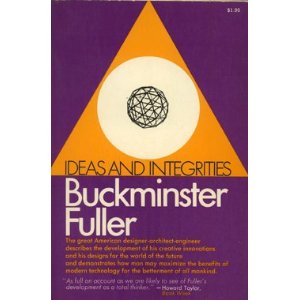
Buckminster Fuller
![]() 6 Star and Beyond–the Essence of Fuller, the Future of Humanity
6 Star and Beyond–the Essence of Fuller, the Future of Humanity
November 28, 2010
I did not truly begin to understand the breadth and depth of Buckminster Fuller's thinking until I read this book as it deserves to be read, with full attention and detailed notes. This is one of those books that merits–and received from me, a Work Table of core concepts, definitions, obstacles, and solutions, posted online at Work Table [link live at Phi Beta Iota the Public Intelligence Blog].
Although I heard Fuller speak personally at Muhlenberg College and distinctly remember him saying that a housing foundation could support the Queen Elizabeth ocean liner, it was not until this book that I understood in detail exactly what he meant: that we are wasting 90% of what we put into buildings. I have previously read and reviewed Critical Path as well as Operating Manual for Spaceship Earth, and it is my great privilege to know Medard Gabel, co-creator of the analog World Brain and sole creator of the new digital EarthGame (in concept pending funding).
CORE POINT: True wealth is cosmic energy and the creation of means to deliver to humanity unlimited free energy. Among many other things this creates the possibility of applying energy to create self-contained homes that are lightweight, fully self-contained in water and sewage, and totally green.
CORE CONCEPT: Capitalism and democracy have been perverted by money–those who manage money manage those who manage politics, and they both concentrate on optimizing the false God of money, an abstract concept hardly worth its paper representation, while ignoring–even subverting–the possibility of achieving infinite cosmic wealth on behalf of all of humanity.
CORE CONCEPT: Predatory capitalism on the one hand, and controlled socialism on the other, are both extremes and both fail to meet the needs as well as the possibilities of humanity. Fullerism is at root a non-zero equation.
PERSONAL POINT: This book answers the question I could not answer when a senior executive asked me “what do you do?” Now I know. I am a Comprehensive Global Architect whose objective is Prime Design: From Waste to Wealth (the title of my next book, inspired by this core reading from Buckminster Fuller). All my prior works, including my most recent, INTELLIGENCE for EARTH: Clarity, Diversity, Integrity, & Sustainaabilty, have been a preamble to what I now recognize is my life's work…I will try to earn another 25 years (I am 58, 58 + 25 is 83 — my family history suggests I will make it.). I am still looking for a country or global organization that wants to profit from doing this.
A few definitions up front:
QUOTE (142): WEALTH [is] the measurable degree of forwardly organized environmental control, in terms of quickly convertible energy, capacities and performance ratioed system capabilities, per capita, per diem.
Advertising destroyed public trust by pre-empting “industrial design” as code for airbrushing superficial changes to move products to market, rather than seeking integral improvements that could be shared with the consumer.
Design-improved livingry increases wealth.
Synergy is the delta between the sum of the parts and their anticipatable outcomes, and the actual outcome not anticipated.
CORE CONCEPTS
Architects deal with the externalities of man.
“At rest” science and understanding (Newton's paradigm) have been replaced by “constant change” (Einstein's paradigm).
Bad housing breeds bad humanity and bad science–the time/energy costs and the materials costs are too high, housing is the socio-economic “runt” of all the professions.
Challenge is IRREDUCIBLE.
Design is innovative re-assembly that adds value.
Design-preventable includes illumination and prevention of corrupt exploitation of materials for inefficient or unjustifiable applications.
Energy mass, energy radiation, energy gravitation (E3) times Intellect (E3I)
Good design would reduce the per capita consumption of building materials from nine tons per person to one ton per person [this is in the developed world–these reductions would allow the extension of the lower tonnage home designs to nine times more people and more–with mass consumption come mass efficiencies.]
Industry is *supposed to be* the organization and application of collective knowledge and action that produces synergy (added value) over the sum of the parts in isolation.
Individual freedom is ESSENTIAL to the expansion of diversity needed to enable collectives to see the whole.
Intelligence masters energy, increases energy, applies energy.
Total Thinking is the intelligent acquisition, ingestion, processing, and exploitation of all relevant information in order to produce efficiencies and effects beneficial to the mission objective.
Wealth is intellect plus energy combined to create capacity [with more free energy making more refined capacity possible].
Worldwide commonwealth credit is both needed and achievable to provide mass-produced sustainable housing for all. That in turn frees up the five billion poor to create “infinite wealth” by combining their intellect with infinite free energy to advance civilization.
OBSTACLES to advancing humanity include:
Advertising in place of genuine progress [should not be a tax-deductible expense in my own view]
“Credit” fueled the perpetuation and expansion of rotten housing at great cost.
Housing is the works of design, the worst of materials, and the worst of applied engineering
Housing as the sucking chest wound in economics [mortgages should not be tax-deductible, this both encourages waste of materials on housing, but also enables the growth of financial fraud]
Managers lack the over-all philosophical discernment to be effective at seeing the whole and building to the whole.
Politics is VERY wasteful, perpetuating inefficient industries.
Specializations are attracting the most gifted, and this leaves the less gifted dealing with integration if they think about it at all. [I always thought this was what business and public administration programs were supposed to do, but having graduated from such a program realize they do not.]
A HANDFUL OF QUOTES
p. 25 “My envisioned transcendental world design plan would be inherently nonpolitical, because it would be utterly independent of any need for authority beyond that to-self-by-self for initiation of its study and development.”
p. 95 In relation to the waste of heavy materials in housing, “…that in this war crisis it is technically treason to allow ourselves to be short sixty-five thousand freight cars weighing fifty tons of steel each, which shortage is equivalent to the number of cars required exclusively to transport the solid foundation and flooring materials unscientifically employed as frozen compression elements to structurally support the tiny weights of one-tenth-of-a-ton load of men who comprise the negligible working loads of housing, or to support machinery from below that could better be suspended, etc.”
p. 246 “The efficiency of the industrial equation is directly proportional to the numbers consuming.” [In other words, capitalism focused on the needs of the one billion rich is long overdue for a redirection of focus to the needs of the five billion poor.]
p.247 “Serve one hundred per cent will involve a world design revolution, not just design of end-products, but of the comprehensive industrial network equations including world-around-livingry-service systems, at regenerative occupancy rentals, mutually installed in anticipatory facilitation of total world enjoyment of individually respected total man.”
p. 249 “Only the free-wheeling artist-explorer, non-academic, scientist-philosopher, mechanic, economist-poet, who has never waited for patron-starting and accrediting of his coordinate capabilities holds the prime initiative today.”
SOLUTIONS
Energy investments will define the future.
Need a world housing industry. We do NOT need water, sewer, and electrical infrastructure. Distributed housing and small cities connected by high-speed rail should be the norm.
Harvesting of scrap is the next needed Manhattan Project/Marshall Plan.
A HANDFUL OF RELATED BOOKS
Radical Man
The exemplar: The exemplary performer in the age of productivity
Communitas: Means of Livelihood and Ways of Life
Human Scale
Nonzero: The Logic of Human Destiny
The Knowledge Executive
Reflections on Evolutionary Activism: Essays, poems and prayers from an emerging field of sacred social change

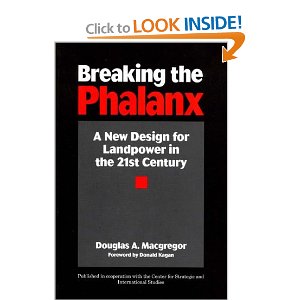
Douglas Macgregor
In 1997, Colonel Douglas Macgregor provided a well thought out blueprint for affecting a Revolution in Military Affairs (RMA) within the U.S. Army, and to a lesser extent the entire U.S. Armed Forces. The blueprint, as detailed in this book, apparently served as an inspiration for the restructuring of the U.S. Army from an organization based on stand alone divisions to its current brigade structure. Yet apparently neither the Defense Department (DOD) nor the Army fully accepted Macgregor's remarkably prescient thinking. His goal in this book was to demonstrate the Army's strategic relevance in the 21st Century as force to counter the bewildering multiplication of threats to U.S. National Security that followed the collapse of the Soviet Union.
Macgregor noted that “military strategy” really refers to the use of military power to achieve strategic goals, but how effective that military power would be is a function of force structure, tactical and operational doctrine, and training. He also persuavely argues that RMA is not a matter of mere technological innovation, but rather concerns the willingness of the armed forces to “devise new ways to incorporate new technology by changing their organization, their tactics, and sometimes their whole concept of war.”
Rather interestingly Macgregor adopted two of the then prevalent concepts of `Network Centric Warfare” (although he never uses this term) as the basis for his proposal to restructure the army. He argued that the newly conceived command system known as C4I [SR] (Command, Control, Communications, Computers and Intelligence [Surveillance, Reconnaissance] ) offered the means to build a new ground force structure based on smaller more flexible units which he calls “Combat Groups.” He also argued that the Army should adopt a `networked type' of organizational structure based on a C4I system that would have a much flatter command structure than the traditional army hierarchical structure. His argument was centered on historical examples that demonstrated that when command authority was dispersed to smaller units, warfare by maneuver and adaptable tactics leading to battlefield success became possible. This latter was probably one reason why the Army only adopted his force structure concept and not his C4I proposal.
Macgregor also argued that the perennially out of control DOD budget could be brought under control by the sensible method of tying force structure and weapons procurement to actual strategic needs based on a rational analysis of real and potential threats to national security. Although DOD would claim that it always does just this, the evidence suggests otherwise as demonstrated most recently F35 strike fighter.
A remarkable book that is as relevant today as when it was written and is for the shelf of anyone seriously interested in military reform.
Worth a Look: Book Reviews on Dereliction of Duty (Defense)

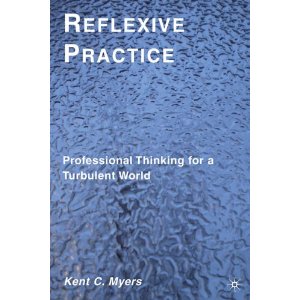
Kent C. Myers et al
![]() Beyond 5 Stars–a Foundation Work
Beyond 5 Stars–a Foundation Work
November 20, 2010
In combination with the other books that I am reading this week, the first by David Perkins, Making Learning Whole: How Seven Principles of Teaching Can Transform Education, the second by Curtis Bonk, The World Is Open: How Web Technology Is Revolutionizing Education, this book I have read in galley form, by Dr. Kent C. Myers [strategist and process historian, a disciple of Russell L. Ackoff] with contributed chapters from a number of other individuals, gives me hope.
This is an extraordinarily diplomatic and measured book, a book that can nudge even the most recalcitrant of know-it-all stake-holders toward the “aha” experience that what they are doing [doing the wrong things righter] is NOT WORKING and maybe, just maybe, they should try Reflexive Practice (or at least begin to hire people that think this way).
This is *the* book that could-should lead to the first-ever Secretary General of Education, Intelligence, & Research, IMHO. THE SMART NATION ACT: Public Intelligence in the Public Interest, done with Congressman Rob Simmons (R-CT-02) was a proponency book. This book by Dr. Myers et al is a praxis book absolutely up there with the other 6 Star and beyond books that I recommend.
For a magnificent companion book, Will Durant's 1916 doctoral thesis, I strongly recommend Philosophy and the Social Problem: The Annotated Edition. The intermediate books would of course be Buckminster Fuller's Critical Path and Russell Ackoff's Redesigning Society (Stanford Business Books).

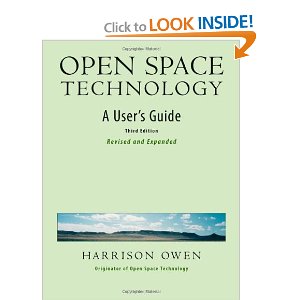
Harrison Owen
![]() Low-Cost Priceless Guide Worth Hundreds of Thousands
Low-Cost Priceless Guide Worth Hundreds of Thousands
October 24, 2010
It's been my pleasure to know the author of this book ever since he hunted me down after my review of Wave Rider: Leadership for High Performance in a Self-Organizing World, and I have also had the benefit of being a participant in a number of Open Space sessions run by, among others, Peggy Holman, author of Engaging Emergence: Turning Upheaval into Opportunity and the older The Change Handbook: The Definitive Resource on Today's Best Methods for Engaging Whole Systems.
I cannot over-state the value of this book to anyone who has a complex and expensive problem but cannot afford to get the author there personally. While the book is no substitute for the genius, the intuition, the experience, and the sheer “quiet energy” that the author can bring to any endeavor, it is not just a starting point, it is more than enough to get you through your first self-organized event, and the results are sure to astonish as well as excite about the potential benefits of having the author lead the next session.
Here is how it works in a nut-shell, and I put this into the review because I am not happy with the minimalist marketing information the publisher has provided but happy that Look Inside the Book is activated–use that feature!
1) Everyone who cares is invited to a meeting in a space large enough to accommodate the group. Many events will charge a fee to cover the space, the food, and the travel costs of the facilitators, some events can be free especially if internal. HOWEVER, the diversity of who is invited (i.e. including outsiders, clients, journalists, the lowest ranking maintenance people), THIS MATTERS….A LOT.
Continue reading “Review: Open Space Technology: A User's Guide”